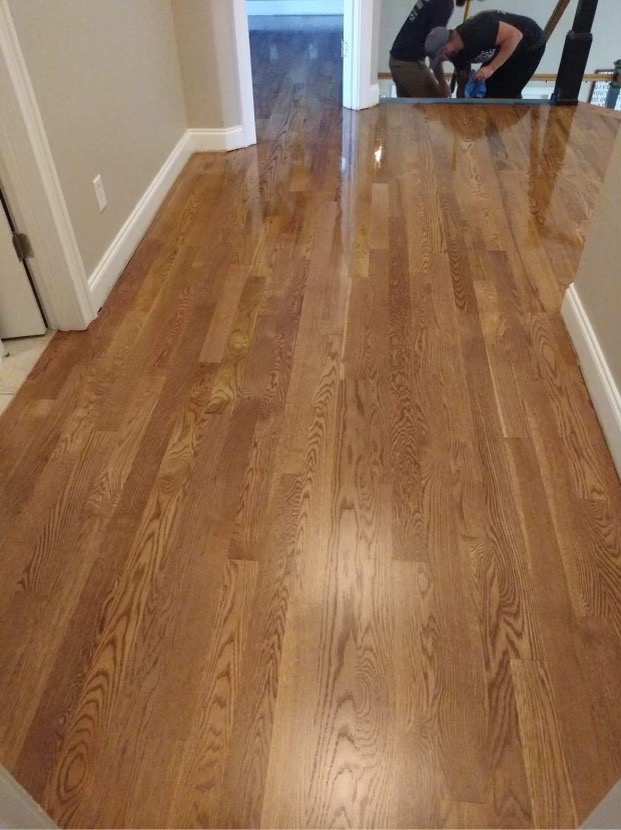Tony Vecchio of 1st Class Flooring, LLC, in LaFayette, GA, had been hired to repair a water-damaged floor on a residence’s second story. The project included
tearing out a damaged portion and replacing it with new flooring, then sanding, staining, and finishing the entire floor.
When Tony originally looked at the floor, he was told that it was white oak. As such, he ordered and weaved in white oak. Fast forward to after Tony had sanded/prepped the floor and stained it with a traditional solvent-based stain. Once the floor was
dry, he noticed a color variance from the old white oak to the newly weaved white oak. Tony thought it might have to do with grade of flooring, so he applied a coat of sealer, hoping the difference would become less noticeable. Unfortunately, the
coat of sealer didn’t appear to change the look of the floor, so Tony applied 2 coats of finish, again in hopes of moderating the variance.
Once completed, Tony knew he had a challenge on his hands. Instead of the 2 coats of finish helping to blend in the color, it actually made the color discrepancy more noticeable. After some detective work, it was discovered that the homeowner was
wrong on the species of existing flooring, and instead of the floor being white oak, it was actually ash. So, as it turns out, the new white oak was actually weaved into existing ash flooring.

The white oak (near) was weaved into existing ash (far).
The homeowner loved the refurbished floor but agreed something had to be done to fix the difference in color. They did not, however, want to have to sand the flooring again, and they were definitely not interested in tearing out all the ash. Tony
told us, “They realized that even if they sanded the floor down to bare wood again, the ash would have to be stained/finished differently than the white oak if they wanted things to match up.”
Tony had seen a number of posts from contractors on social media who were tinting Basic Coatings® finishes with HyperTone™ Stains,
and he wanted to find out if this new method of applying color could be a suitable solution for this particular challenge. He contacted Basic Coatings, and after discussing his various options, decided to offer tinting the finish to the homeowners.
Ultimately, they liked the idea and agreed to move forward with fixing the floor using HyperTone Stains as tint as follows.
 |  |
| Step 1: The white oak was covered with blue tape at all the seams, and the ash was left uncovered/open. |
 |  |
| Step 2: HyperTone Stain was mixed into StreetShoe® NXT (in this case, 3 ounces of Tobacco per gallon of finish). | Steps 3 and 4: The first and second coats of tint/finish were applied to the ash portions of the flooring. |
 |  |
| Step 5: A top clear coat of finish was applied. | Step 6: The tape was removed. |
 Final Result Final Result
| Ultimately, the homeowners were thrilled with their new floor, especially because they didn’t have to replace all the ash, and Tony was excited that he had a new tool available to him to resolve customer issues and challenges.
According to Tony, “This solution will save a lot of contractors from having to re-sand or tear out flooring when things don’t go as planned.” We want to thank Tony for his call and the opportunity to help him with products and methods that are unique in the industry. To contact us for help on any hardwood flooring issue, please click here to fill out the online form, and a Basic Coatings representative will contact you shortly. To view our technical bulletin on blending
and tinting finish, please click here. “This solution will save a lot of contractors from having to re-sand or tear out flooring when things don’t go as planned.” |